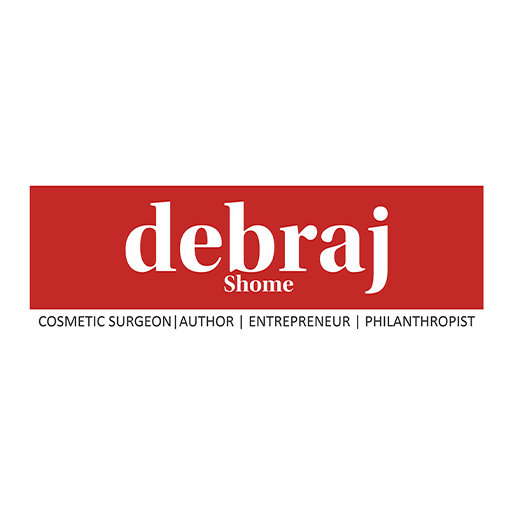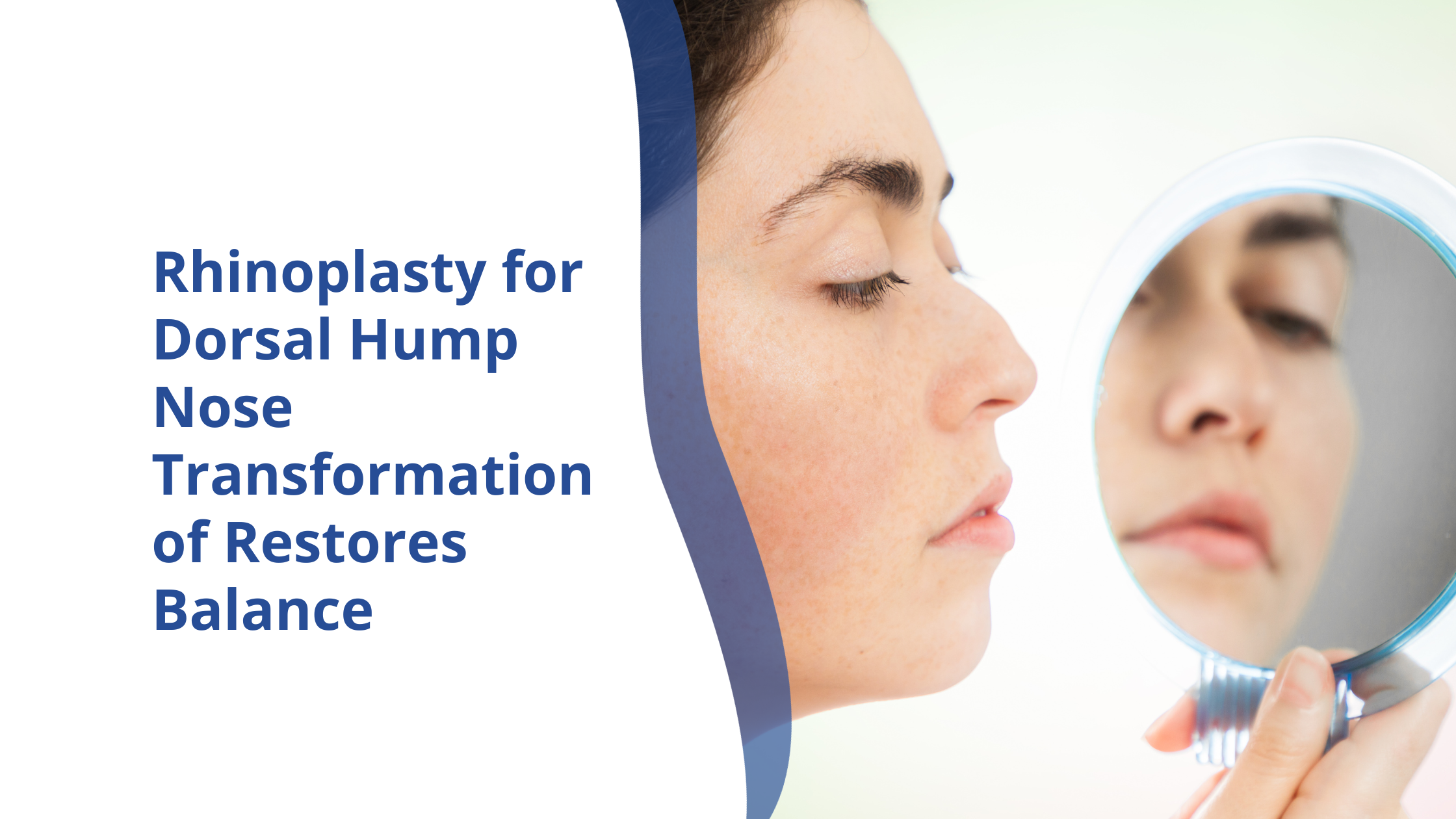The dorsal hump refers to the bump on the nose, which gives the nasal bridge a convex appearance. It is generally not very visible from the front, but it can be quite pronounced on the side profile. If you have also noticed this bump on your nose, then rhinoplasty for the dorsal hump might just be the solution for you.
Dorsal hump is caused by an irregularity in cartilage and bone. It starts in the upper region of the nose and ends before the tip of the nose. It can be present from birth, or some might develop it later in life for various reasons. In some cases, the dorsal hump can be because of the bone sticking from the side of the nose, and in such cases, it is more visible in the front view than the side profile. The dorsal hump makes the nose appear shorter and often makes the eyes, cheeks, and jawline appear less prominent. This is the reason why most people seek nose-job treatments to correct the dorsal hump for aesthetic reasons.
What Causes A Dorsal Hump?
Here are some common reasons for the development of a dorsal hump:
- Genetics: This is the most common reason that influences your nose shape. Your genetic makeup can cause a dorsal hump if one of your parents has a dorsal hump. If you have inherited this characteristic, it might not have been visible in early childhood but can become more prominent in the teens as the nose grows and develops.
- Trauma: Injury or trauma from a fall or blow to the face can cause the misalignment of bone and auricular cartilage in the nose to change their shape and cause the formation of a bump. This is very common in children because during the development stage, the cartilage is soft, and trauma can cause the appearance of the hump on the bridge of the nose.
- Overgrowth of nasal cartilage or bone: Sometimes, during the developmental phase, there can be an overgrowth of nasal cartilage or bone, leading to the formation of a dorsal hump.
- Aging: As people age, the cartilage in the nose can change, leading to the appearance of a dorsal hump. This change in the shape of the nose can be due to the natural aging process and the effects of gravity on the nasal structures.
- Deviated septum: This happens when the cartilage wall that separates the two nostrils is not in a straight line but misaligned. This can lead to breathing issues and potentially cause dorsal humping.
- Allergies: These cause swelling in nasal tissues, leading to the appearance of a bump. It can be non-permanent and resolve when the swelling goes down.
- Inflammation of nasal polyps: Polyps line the inner nasal lining, and they can cause a hard bump on the nose, leading to the nose appearing beaked.
- Boils: These are usually caused by infections in the hair follicle and appear on the nose, leading to the formation of a hump on the bridge.
If you are concerned about the dorsal hump, then contact the best rhinoplasty surgeon for the best treatment options, depending on the underlying cause and severity of the condition. In many cases, dorsal hump does not cause any significant discomfort, but some symptoms of dorsal hump include
- Pain in the nostrils
- Swelling
- Redness around the nose or in the nose
- Tenderness
- Uncomfortable sensations on the nose
Treatment options for Dorsal Hump
The best way to get rid of the dorsal hump is rhinoplasty surgery. There are some non-surgical options too, such as
- Fillers: Dermal fillers, especially hyaluronic acid fillers, are used to fill in the depression around the hump and give the nasal bridge a straight line.
- Makeup to camouflage the bridge
But these are temporary options. Rhinoplasty, or the nose job, can easily reshape the hump on the nose. There are two ways to do a rhinoplasty for the dorsal hump.
Open rhinoplasty technique
This procedure is done as part of primary rhinoplasty. To correct the hump or bump on the nasal bridge, the surgeon makes an incision across the columella of the nose and lifts the skin. Then the surgeon reshapes the bone and cartilage to straighten the nasal bridge and create a smooth profile and contour for the nose. This results in a more balanced facial appearance. In open rhinoplasty for dorsal hump removal, the surgeon has full access to the nasal structure, allowing him to sculpt the nose more precisely. If necessary, the surgeon might also use cartilage grafts for additional support for the nasal structure. Once satisfied with the changes, the surgeon will drape the skin back and close the incisions with sutures, and the healing process will start.
Closed rhinoplasty technique
This is a less invasive procedure in which the rhinoplasty surgeon makes incisions on the inside of the nose, and there is no visible scarring outside. The surgeon will then make the necessary changes in the bones and cartilage to reshape the bridge line. If necessary, cartilage grafts can be used successfully to add more refinement to the nose shape. When the surgeon accesses the nose from the inside, it offers great precision in reshaping the nose. However, this procedure cannot be used for major changes. The incisions are then closed, and you will be on your way to recovery.
The choice of the type of rhinoplasty used for dorsal hum removal will depend on the needs and goals of the patient, the potential risks, and the recovery process.
Rhinoplasty for dorsal hump removal can also help improve breathing by reducing the obstruction caused by the bump and giving it a more aesthetically pleasing look.
Recovery post-dorsal hump nose rhinoplasty
It is important to plan some recovery time after dorsal hump nose removal. Swelling and bruising are common for the procedure, and you might have to take some time off work for a few days. Antibiotics will be given to you to help reduce the chances of infection and pain. Recovery after dorsal hump nose rhinoplasty typically involves several stages, and it’s important to follow your surgeon’s post-operative instructions closely to ensure a smooth and successful recovery process. While individual experiences may vary, the following is a general outline of what to expect during the recovery period after dorsal hump nose rhinoplasty:
Immediate post-operative period (first week): You may experience swelling, bruising, and discomfort around the nose and eye area. Your surgeon may place a splint on your nose to support the new structure and protect it during the initial healing phase.
First two weeks: Swelling and bruising may peak during the first few days and gradually subside. You might be advised to keep your head elevated to minimize swelling. Sleep with your head elevated. Your surgeon may remove the nasal splint and any external sutures during this time and will provide instructions for cleaning and caring for the incision sites.
First month: You may still have some residual swelling and bruising, but it should continue to decrease. It’s important to follow the post-operative care guidelines provided by your surgeon, which may include gentle cleansing of the nasal area and avoiding strenuous activities that could impact the healing process.
First three to six months: While the majority of swelling should have subsided by this point, some residual swelling may persist. You may begin to see the initial results of the surgery, although the final results may take several months to a year to fully manifest. It’s essential to continue following your surgeon’s guidance and avoid any activities that could potentially impact the healing process.
Long-term recovery (one year): By the one-year mark, the majority of the swelling should have resolved, and the final results of the surgery should be apparent. It’s important to attend follow-up appointments with your surgeon to ensure that the healing process is progressing as expected.
Throughout the recovery period, it’s crucial to avoid any activities that could jeopardize the healing process, such as heavy lifting, strenuous exercise, or any actions that could cause trauma to the nose. Additionally, following your surgeon’s instructions for post-operative care, including any prescribed medications and keeping regular follow-up appointments, is essential for a successful recovery. If you have any concerns or notice any unexpected changes during the recovery period, it’s important to contact your surgeon promptly.

